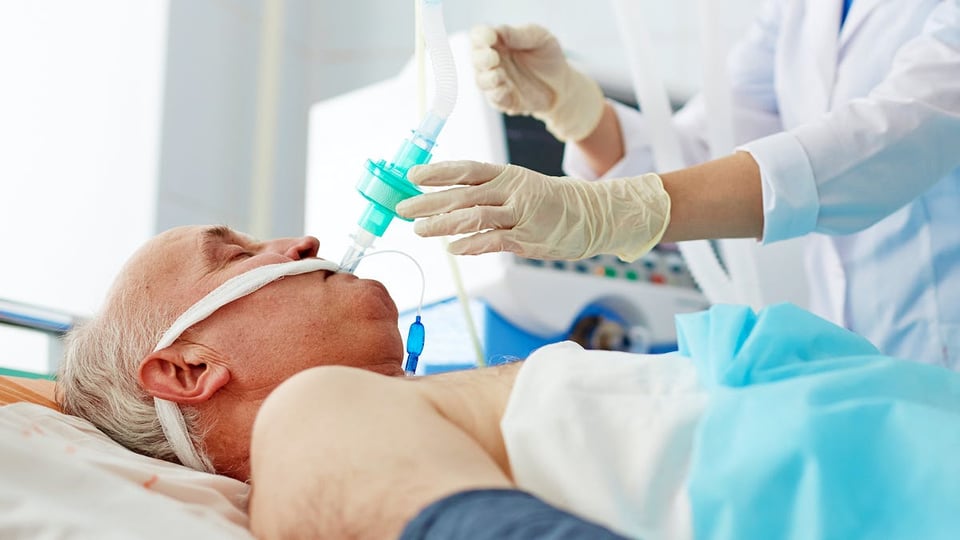Treating the Critically Ill in the Acute Care and ICU
Catherine Valentino OTR/L OTD, MHSc, MAAL, BS
Includes all course content in digital format
Prerequisites Required
Description
With an increasing number of patient discharges happening from acute care to home settings it is imperative for clinicians in the acute care field to provide the most up- to-date and impactful treatments possible. According to the Academy of Acute Care Physical Therapy, "83%" of therapy recommendations are met during the discharge process (2018). This indicates significant responsibility to rehab clinicians for providing the most beneficial information possible. Much of the groundwork of what a patient can achieve is implemented during the acute care phase of healthcare.
This interactive course will cover critical components associated with our compromised patients in the acute hospital setting. Participants will focus on understanding what is happening from a transdisciplinary perspective and how best to achieve functional outcomes. Hands-on experience will be achieved in both testing and treatment components during labs. Current research and techniques will be the focus of the day to put our best foot forward in acute patient care.
Highlights
- The most effective evidence-based intervention approaches for acute care/ICU management that are applicable to use with medically complex clients
- Practice dozens of testing measures and treatments that are the most appropriate for use in the acute care/ICU setting
- Improve clinical decision-making from early mobilization to discharge and documentation
- Multiple hands-on labs to allow clinicians to try evaluations and treatments throughout the day
- Relevant information from current research on the impacts of therapy interventions and how we can improve the lives and mortality of our patients
Learning Objectives
- Demonstrate proficiency in handling many of the various lines, drains, and ventilation valves impacting transfers and mobility of hospitalized patients.
- Interpret lab values and vital signs as they apply to clinical decision making.
- Utilize interdisciplinary evaluation and assessment techniques for common dysfunctions within the acute setting to improve treatment planning, progress reporting, and documentation.
- Apply a variety of treatment techniques during lab that can be put into practice immediately.
- Identify tips to improve application of treatment and testing to perform accurate documentation.
- Incorporate a transdisciplinary approach to critically ill patients to increase both patient and clinician satisfaction.
Course Content
| Treating the Critically Ill in the Acute Care and ICU | SCORM Package | ||
| Next Steps | Module |
- The Current Landscape of Acute Care and the Critically Ill
- Current state of acute care environment
- Complexities and barriers in the acute care setting
- The role of therapy and the transdisciplinary team
- Management of Lines/Tubes, Lab Values
- Line locations and handling
- Interpreting critical lab values and key indicators
- Impact of labs and vital signs on documentation during treatment
- Safely assessing patients with tracheal ventilation devices
- Hands-On Lab
- Evaluation and Testing Choices for the Acute Care
- Setting
- Testing options for PT, OT and SLPs
- Assessment strategies for cognition and mobility
- Evaluating acute care patients with cognitivedysfunction
- Multidisciplinary tests
- Implications of testing measures; What the numberstell us
- Hands-On Lab
- Best Treatment Options for the ICU and Critical Care Units
- Low-level patients and bed-based treatments
- Mobility as a team approach
- New areas of research and evidence-based practice for PT, OT, and SLP
- Early mobilization
- Hands-On Lab
- Best Treatment Options in Acute Care
- Multidisciplinary approaches to treating patients in the hospital setting
- Treatments leading to functional outcomes andindependence
- Patient satisfaction with therapy in the acute care setting
- Hands-On Lab
- Discharge and Documentation Support for the AcuteCare Setting
- Describing acute care treatments in a skilledmanner
- Documenting this critical information for this patient population
- Communication with family/caregivers
Catherine Valentino OTR/L OTD, MHSc, MAAL, BS, is a licensed Occupational Therapist with an extensive history treating and educating on dementias and neurological disorders. In her clinical experience, she has worked with adult and geriatric populations in various long term, sub-acute, and outpatient settings. Dr. Valentino earned her bachelors in kinesiology before pursuing her master's degree in health sciences and doctorate in occupational therapy. She furthered her specialization by becoming a clinical specialist in core geriatric competencies and earning her National Dementia Instructor certification through CPI. She has been educating across disciplines on the impact of cognitive changes in rehabilitation for the past 4 years, allowing clinicians to develop a comfort level in both medical conditions and developing functional plans of care to successfully meet clients' needs.
DISCLOSURES
FINANCIAL: Catherine Valentino is compensated by Summit as an instructor.
NONFINANCIAL: Catherine Valentino has no nonfinancial relationships to disclose.
Summit receives financial support for this course from Physitrack
Click here to check accreditation for this course.